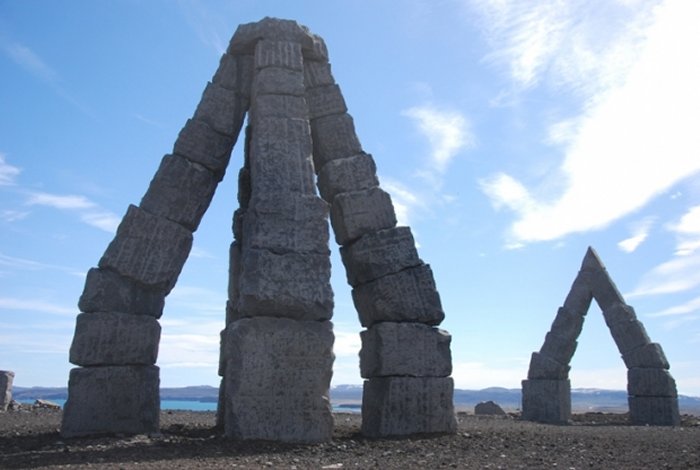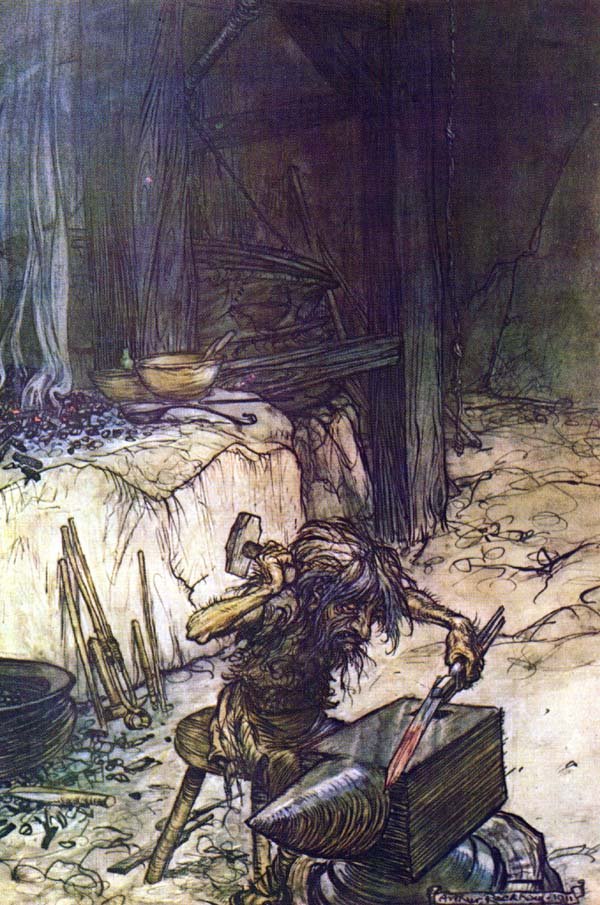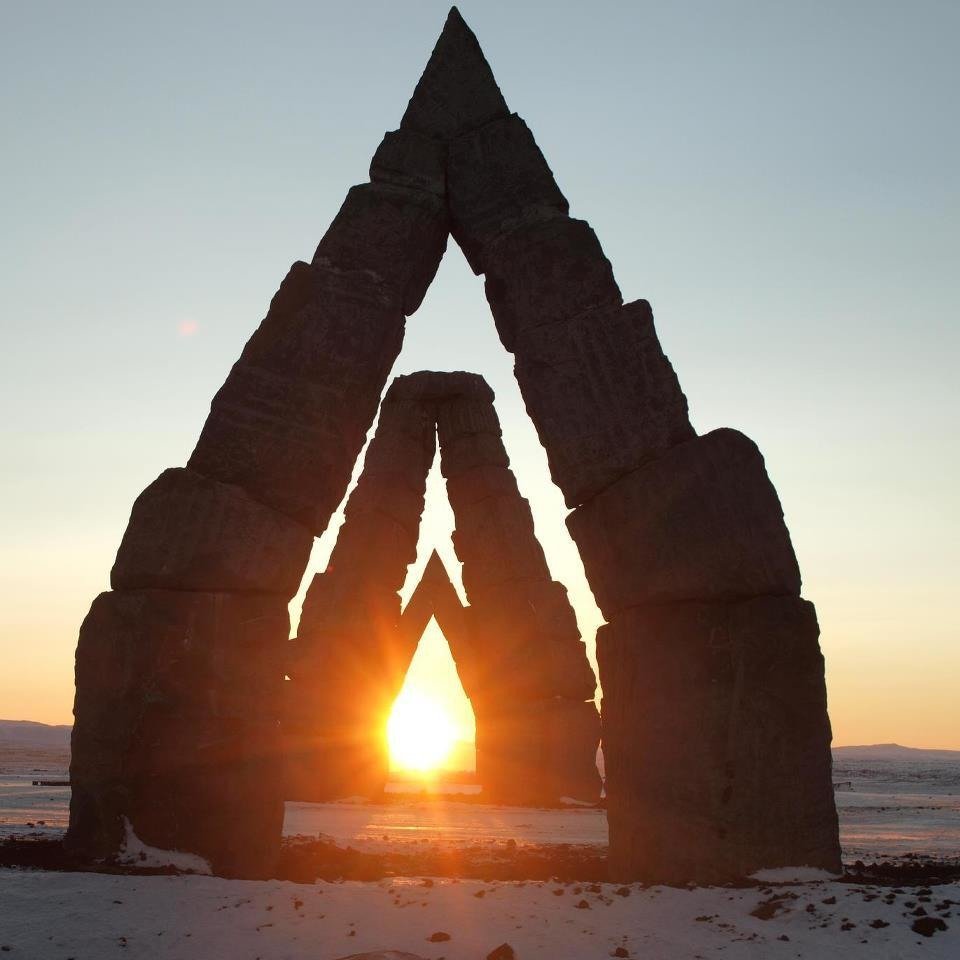W Islandii powstaje wielka pogańska świątynia Arctic Henge
Budowana jest od roku 1996, dosyć powoli ale systematycznie rozwijana według skomplikowanewgo projektu. Jest gigantyczna, a jej treść nawiązuje nie tylko do Eddy i postaci 72 Krasnoludów z Völuspá (Przepowiednia Prorokini), ale tak jak Stonehenge ma stanowić rodzaj astronomicznego kalendarza i współgrać z Zimowym Przesileniem na Islandii (Słońce w punkcie o północy zegarowej i astronomicznej Przesilenia – widoczne w bramach), wschodami słońca w poszczególnych Kręgach Kamiennych i Bramach Drogi Krasnoludów, porami roku i ze staroislandzką miarą tygodnia (5 dni – dla każdego z 72 Krasnoludów). Kto odwiedzi świątynię znajdzie w niej rzeźbę Krasnoluda o odrębnych cechach i charakterze odpowiadającym czasowi jakim on się opiekuje, który to Krasnolud będzie miał też w opiece Czas Narodzin każdego z odwiedzających. Jest to nie tyle pomysł na przyciągnięcie turystów do Islandii, co przede wszystkim wspaniałe miejsce, cudowny monument i rzeźby które sprawiają wrażenie starożytności mimo, że są współczesne, Świątynia oddaje hołd pamięci Staroislandczyków, którzy przechowali Eddę Poetycką i pogańskie wierzenia staroislandzkie, tradycję i obrzędowość pogańską. Jest też prawdziwą, czynną naturalną świątynią dla nowych wyznawców etnicznej Rodzimej Wiary Islandii, których przybywa coraz więcej. Wygląda na to, że to Islandia jest krajem Wzorcowym Wielkiej Zmiany, w którym proces ten trwa i nabiera coraz większego rozmachu.
CB
MessageToEagle.com – Located in Raufarhöfn, one of the most remote and northernmost villages in Iceland stands a magnificent, giant sculpture called the Arctic Henge.
It’s a huge sundial similar to Stonehenge and its purpose is to harness the Midnight Sun at the Arctic Circle. The Arctic Henge is inspired by the mythical world of Eddic poem Völuspá (Prophecy of the Seeress), taking from it the concept of 72 dwarves who represent the seasons in the world of the poem, among other symbolic queues.
A new monument that will preserve Nordic roots
Although it looks like an ancient monument, it’s a new construction that is still under development.
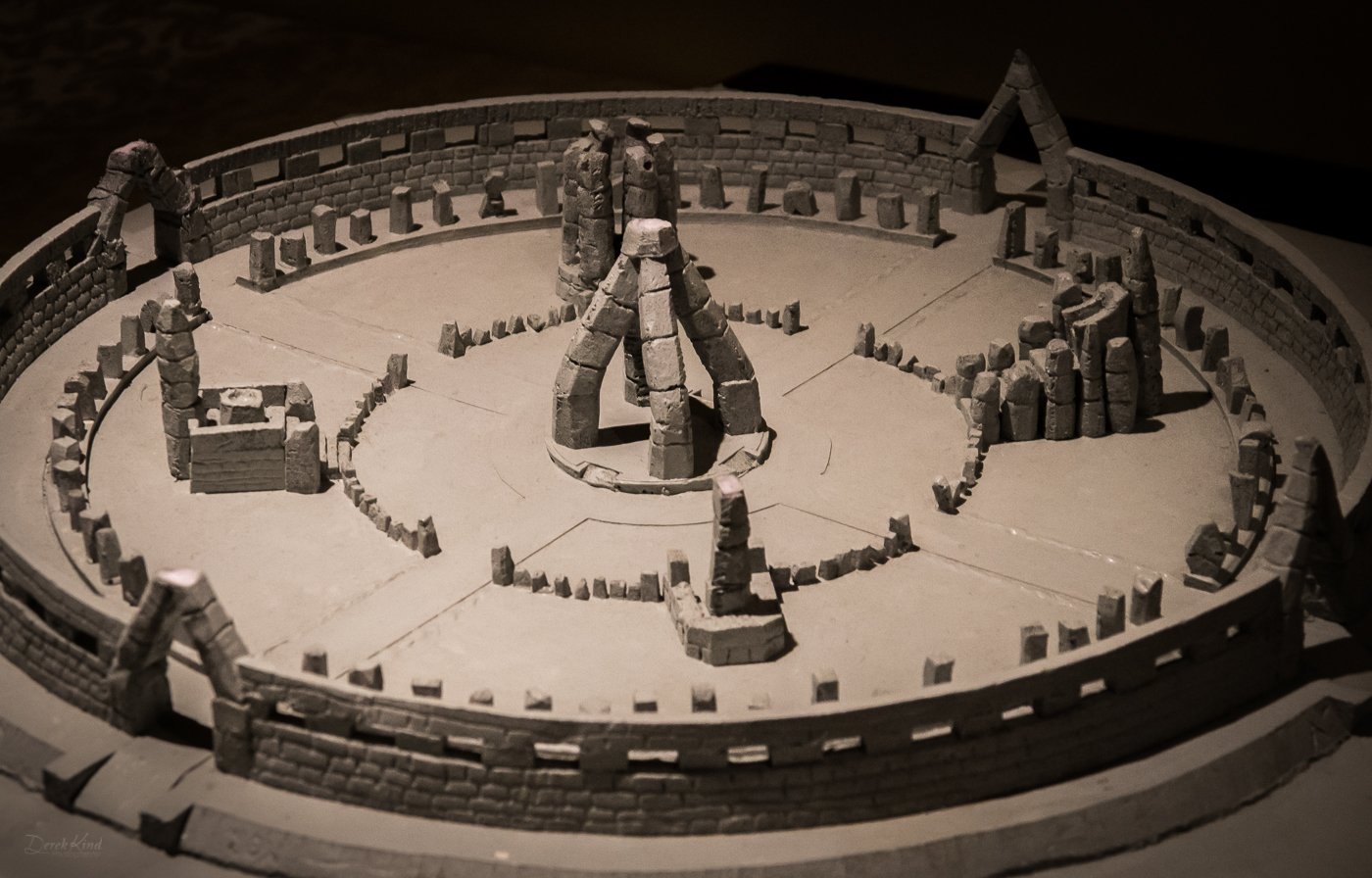 Arctic Henge Model. Image credit: whatwegotuptoiniceland.com
Arctic Henge Model. Image credit: whatwegotuptoiniceland.com
The Arctic Henge project started in 1996. The monument was built to preserve Iceland’s Nordic roots, as well as to honor some of the neo-pagan beliefs that have arisen in certain areas.
When completed, the Arctic Henge will be 52m in diameter. The ambitious series of circles and stacked basalt columns are placed according to a complex system based on old Norse mythology. Utilizing the ideas of a pastor named Kolbeinn Þorleifsson (who believed dwarves corresponded to seasons in the Edda) there are 72 stones, each one representing a different dwarf name.
Dwarves in Norse mythology
Dwarves played an important role in Norse mythology. They were craftsman and provided the gods of Asgard with gifts and powerful weapons.
Thor’s hammer and Odin’s spear came from the dwarves. The Norse dwarves lived in a place called Nidalvellir which stands for “dark fields”. These small and clever beings resided under rocks and in caves underground.
The Arctic Henge and its giant dwarf path
The Arctic Henge will contain a Dwarf Path including the names of 72 dwarfs which form a year-circle in which each dwarf has five days. A crystal at the top of an 8-metre-high column will throw light all over the Henge. Each dwarf will have his name and character, and visitors can find their own Birthday Dwarf.
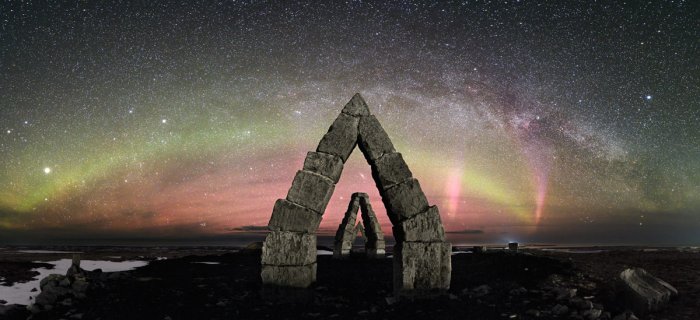 Arctic Henge and northern lights in Iceland. Image credit: activenorth.is
Arctic Henge and northern lights in Iceland. Image credit: activenorth.is
The Arctic Henge will also capture the sunrays, cast shadows in precise locations and capture the light between aligned gateways.

